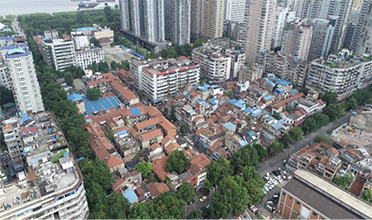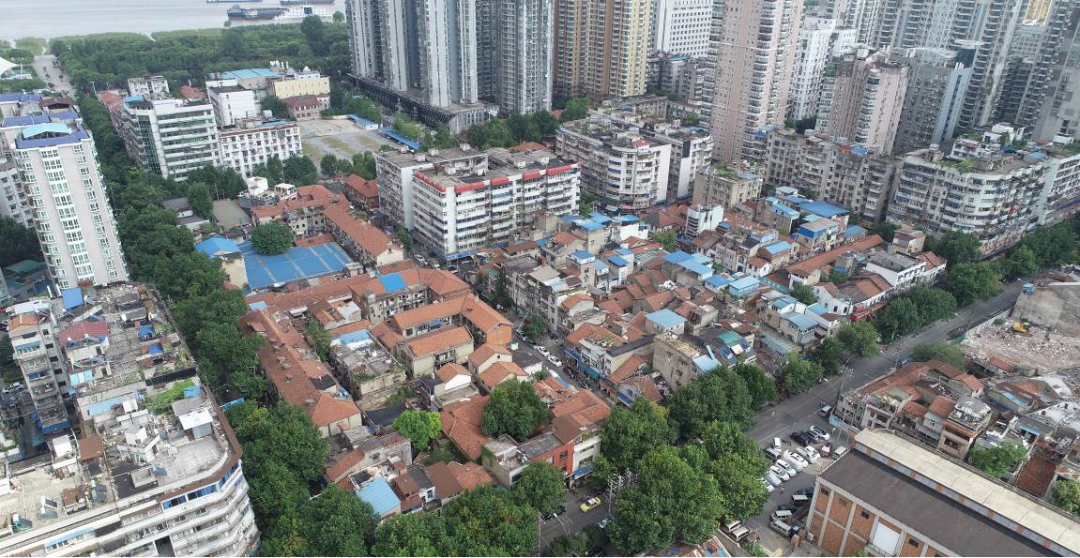



Abstract
The application of "micro-regeneration" concept in open community is an important part of urban organic regeneration in the stock age, and it also responses to the policy of opening old and closed residential communities. Based on the concept of "micro-regeneration" and focusing on needs of the public and characteristics of places, this paper first puts forward the "four-plate" micro-regeneration strategy: business upgrading and multiple brands introduction, road function upgrading and public places revitalization, building facade renovation and indoor space remodelling, and municipal facilities renovation and environmental quality improvement. Then constructs a "three-step" implementation system: building a government overall planning platform, raising public participation awareness, and recruiting community planners.
Keywords
Micro-Regeneration; Open Community; Community Building; Liuhe Community
1 Introduction
Based on "daily needs" the concept of urban "micro-regeneration" has been widely used in recent years, which is different from large-scaled urban and neighbourhood regeneration. Unlike large-scaled urban and neighbourhood regeneration, "micro-regeneration" aims to respond to the needs of society through a "micro-investment, small-scale, progressive, and diversified" approach to urban regeneration, which has a lower implementation threshold and a wider form of social participation. In addition, the concept of "micro-regeneration" continues the theory of organic regeneration in the renewal of historic districts and old neighbourhoods, it pays attention to the inner development law and social order of the city, focuses more on the functional integration and environmental quality improvement of the damaged urban space, and highlights the cultivation of a sense of belonging and regional characteristics, which is a comprehensive-oriented regeneration strategy. It is a comprehensive regeneration strategy. To create open communities, the concept of micro-regenerqtion is being explored, and how to improve the environmental quality and vitality of communities through micro-regeneration strategies under the proposition of "open space, open management, and open operation" has become a topic of discussion in the planning field.
2 The Concept of "Micro-Regeneration" and Open Community Building
2.1 Concept of “micro-regeneration”
Micro-regeneration is not a simple process of changing from "demolition to retention" to "retention to demolition", but a kind of self-regeneration relying on the public and the society, through reasonable guidance of the government and the active public participation, to raise awareness of micro-regeneration and integrate into resident’s daily life. The concept has the following connotations:
(1) Focus on the inheritance and continuation of traditional urban lineage. While conventional urban regeneration tends to destroy the original urban fabric and landscape, and sever social relationships, micro-regeneration focuses on reflecting the unique cultural attributes of the region, respecting the ecological base and social structure, preserving the local lifestyle, and realizing the spiritual and material space of the place through minimal intervention.
(2) Emphasize the catalytic effect of "stimulating a larger-scale problem through a smaller one". The core of micro-regeneration is to propose an implementable renovation strategy for specific problems. The improvement and optimization of a specific project will influence the self-regeneration actions of the surrounding areas, forming a chain effect of "point leading line and line leading surface".
(3) Build a bottom-up regeneration model with a linkage of government and the public. For multiple and complex interest groups, micro-regeneration emphasizes the government's guidance and public participation with a mutually beneficial and cooperative relationships among regeneration stakeholders, so as to maximize the consciousness of the community and society, and form a benign and autonomous regeneration mechanism.
(4) Highlight the concept of "gradual and small-scale" development. The concept of micro-regeneration is against the one-step crude construction model, but advocates a long-lasting sustainable construction, and the development of a dynamic and flexible overall action plan, which can be revised and improved in the process of implementation in response to changes in external conditions.
2.2 Building Open Communities
2.2.1 The development of open communities
As early as the 1970s, the Machu Picchu Charter considered the city as a dynamic system, and urban planning must consider the sustainable development of the city and the changefully urban problems, emphasizing that the social relationship between people is a basic task of urban planning. In urban construction, the road layout of "narrow streets and dense road networks" and the open urban planning concept of "small-sized neighbourhoods" have been the basic models of urban development in the West. It advocates the creation of intensive land use and walkable road spaces to create a liveable environment with humanistic care, and the New Urbanism concept of community is based on the open community, which integrates the community transportation system with the urban transportation system by building an open and interoperable road system with a reasonable and appropriate service scope. It highlights the sharing of social resources within the community, saves construction and operation costs, and activates overall community vitality with the shaping of street spaces.
China has built a large number of closed communities with groups of units. In the current urban regeneration project with specific urban stock of land resources, such closed communities take up a large amount of urban public resources due to their huge and isolated forms, destroy the urban spatial structure and transportation system, which cause a serious "space waste". In order to prevent this disorderly construction of large-scale communities in the city, the CPC Central Committee and State Council on Further Strengthening Urban Planning and Construction Management Opinions pointed out that "New residential buildings should apply the neighbourhood system planning, no longer create closed residential communities. Completed residential neighbourhoods and unit compounds should be gradually opened to achieve public internal roads.” This requirement has laid a solid policy reference for open city construction.
2.2.2 Key points of open community building
In Western community building practice, the regeneration model of "initial scheming, master planning, detailed design, and project implementing" has long been formed, emphasizing active and spontaneous participation of residents, focusing on cultivating a sense of belonging in the spiritual level and establishing a comfortable and safe living environment in the physical level. The core of community building is the creation of public space, which should be "daily" and "social". As the material carrier of a human living space, community space is the gathering of daily social events, and then through human life behaviour, it generates cultural connotation, thus reflecting the multi-dimensional attributes of the community. In general, the creation of open communities has three main points: spatial interoperability, resource sharing, and composite diversity:
(1) Spatial interoperability refers to the interconnection between the "small" open spaces of the community and the "large" open spaces of the city. On the one hand, integrate the community road system into the city-scale road system to create an accessible and flexible traffic system. On the other hand, the green space system at the city level can be extended to the public green spaces at the community level, constructed the urban ecological network.
(2) Resource sharing refers to improving the commonality and service scope of public service facilities in the community, cultivating residents' awareness of reasonable and efficient use of public resources, and building a resource sharing platform, including facility sharing, information sharing, and space sharing, etc.
(3) Compounding and diversifying means that the functions of public buildings and public spaces in the community can meet the multiple needs of different groups, merge similar functions, and centralize scattered and disorderly functional nodes to avoid one-way inefficient waste of resources.
Author: Li Dong, Wuhan Planning and Design Company
Source:<https://mp.weixin.qq.com/s/OWbdG-WElwGX3Sezb8-4pg>
Edited and Translated by Zhang Chenxi